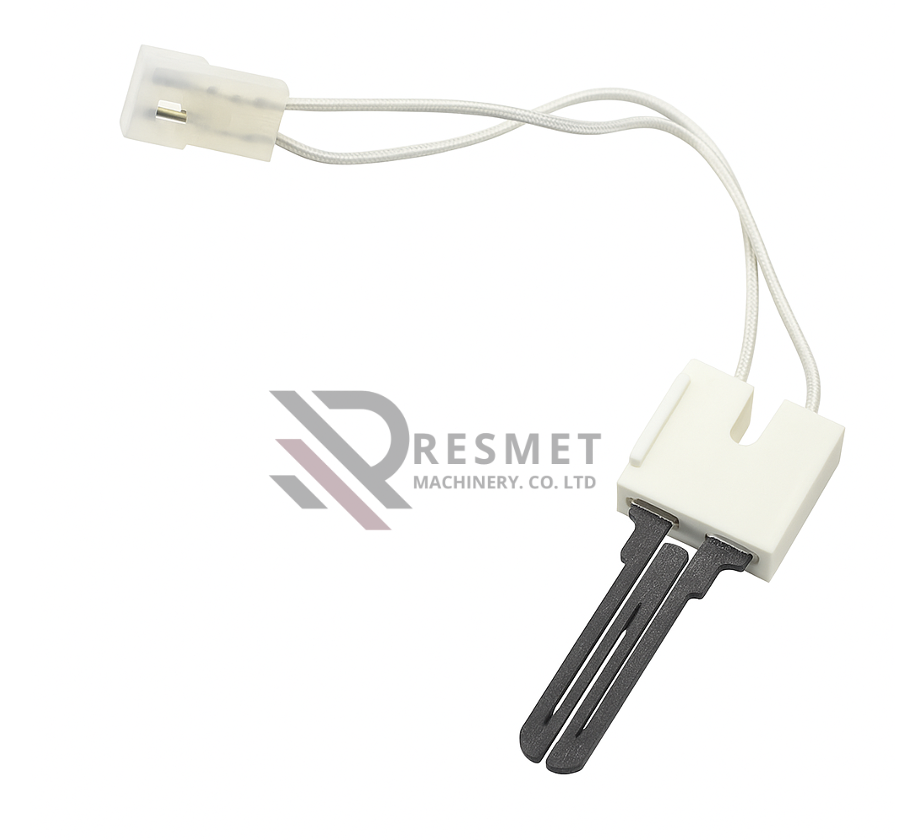
Silicon Carbide Hot Surface Igniter
A silicon carbide hot surface igniter is a device used to ignite gas in appliances such as furnaces, boilers, and water heaters, heating its surface to high temperatures when an electric current passes through. Hot surface lighters can be made from silicon nitride or silicon carbide. Hot surface flame retarders are often used for furnaces or as a replacement for gas furnace hot surface.
Core Material Properties
1. Physical Parameters
Density 3.21-3.23g/cm3 (40% steel), Mohs hardness 9.0-9.5, flexural strength 400-600 MPa.
2. Thermal Parameters
Thermal conductivity 120-150 W/(m.K), the coefficient of thermal expansion is 4.0x106/K, and the melting point is 2730°C.
3. Electrical parameters
The breakdown electric field strength is 3MV/cm, the dielectric constant is 9-10, and it is suitable for a wide voltage of 4V240V.
4. Ignition efficiency, temperature rise rate up to 1200°C/ms, ignition delay ≤5ms, 85% humidity working for 2000 hours, efficiency only 2.3%.
Environmental adaptability
IP67 waterproof, sulfur resistance 2.5% under corrosion conditions (service life up to 6.8 times longer than ordinary materials), -50°C to achieve 0.3 seconds ignition.
3. Safety, anti-static ≥ 25kV, safe current threshold 180mA/5 minutes, detonation threshold 450mA/100ms pulse.
Typical application scenarios
1. Aerospace
The ignition head of the launch vehicle is adapted to the temperature change of 55-800°C, and the tangential bore accuracy of the 120-ton liquid oxygen engine is 0.5um. Metal 3D printing shortens the development cycle by 45%.
2. Energy and chemical industry
The service life of the catalytic cracking is increased by 180% and the waste incineration unit has obtained ATEX certification.
3. Civil field
The ignition success rate of the gas stove is 99.97% and the business card-sized ignition device supports 300 ignitions.
Trends in technological evolution
Reduction of mass production costs of 8-inch wafers by 40%, industrialization by 2025. The switching loss of the MOSFET module is reduced by 70% and the radiation-resistant version has passed 50 days of spatial validation (parameter drift < 0.1%).
Technological advancements in silicon carbide igniters have brought home components to the standards-leading stage and will continue to unlock potential in the field of high reliability in the future.